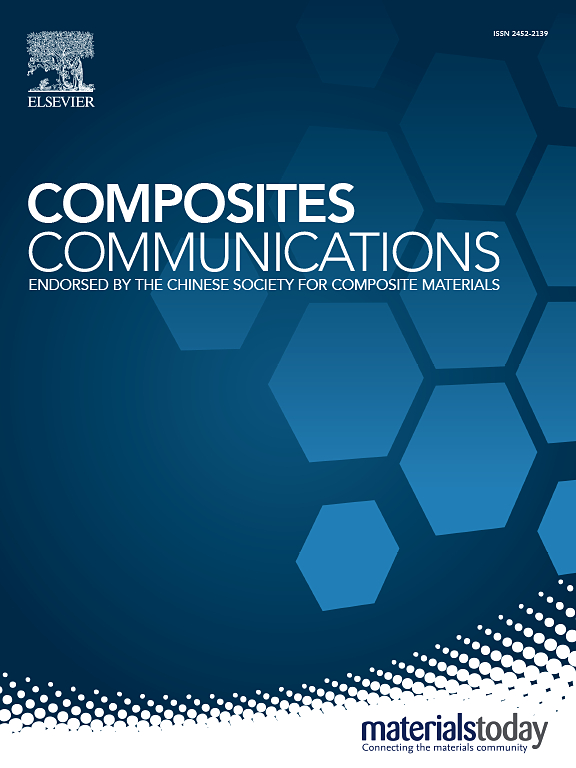High-strength polyurethane-reinforced glass fiber spacer fabric for cost-effective, lightweight, and high-temperature insulation applications
IF 6.5
2区 材料科学
Q1 MATERIALS SCIENCE, COMPOSITES
引用次数: 0
Abstract
Compared to dense glass fiber textiles, 3D spacer inorganic glass fiber fabrics offer significant advantages in terms of lightweight design, superior thermal insulation, and high-temperature resistance. However, intricate weaving process, high manufacturing costs, and limited strength of spacer fabrics pose significant challenges to their broader application. Herein, a polyurethane foam-reinforced glass fiber spacer fabric (GSFP) was developed to address these issues. An efficient fabrication strategy, encompassing glass fiber preparation, weaving, and structural refinement, was first developed to fabricate spacer glass fabrics with thicknesses ranging from 4 to 12 cm. Subsequently, the spacer glass fabric structure was resin reinforced using a hand lay-up technique and the infusion of hollow glass microsphere-reinforced polyurethane foam. With a 10 % microsphere concentration, polyurethane foam achieved an optimal balance between mechanical strength and thermal insulation. GSFP demonstrated a 7.1 % enhancement in mechanical performance and an 18 % improvement in thermal insulation properties. After five compression cycles, GSFP embedded with 10 % glass microspheres retained 85 % of its compressive strength. With its light weight, superior strength, thermal insulation, GSFP holds promise for sustained use in high-pressure and high-temperature environments.
求助全文
约1分钟内获得全文
求助全文
来源期刊

Composites Communications
Materials Science-Ceramics and Composites
CiteScore
12.10
自引率
10.00%
发文量
340
审稿时长
36 days
期刊介绍:
Composites Communications (Compos. Commun.) is a peer-reviewed journal publishing short communications and letters on the latest advances in composites science and technology. With a rapid review and publication process, its goal is to disseminate new knowledge promptly within the composites community. The journal welcomes manuscripts presenting creative concepts and new findings in design, state-of-the-art approaches in processing, synthesis, characterization, and mechanics modeling. In addition to traditional fiber-/particulate-reinforced engineering composites, it encourages submissions on composites with exceptional physical, mechanical, and fracture properties, as well as those with unique functions and significant application potential. This includes biomimetic and bio-inspired composites for biomedical applications, functional nano-composites for thermal management and energy applications, and composites designed for extreme service environments.
 求助内容:
求助内容: 应助结果提醒方式:
应助结果提醒方式:


